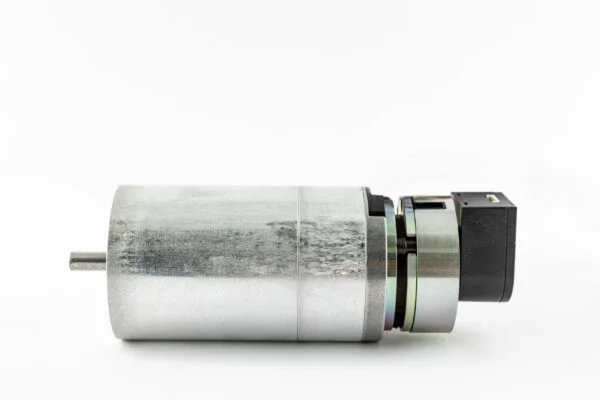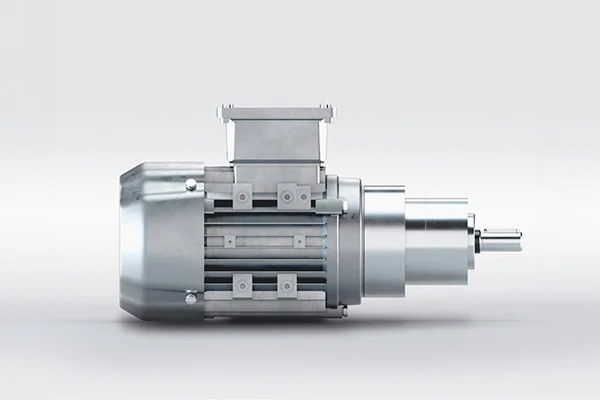Worm gearboxes from b-drives
– cost-effective & self-locking angular gearboxes
Basics – Introduction & How it works
What is a worm gear?
A worm gear is a special angular gear consisting of a worm (screw) and a worm wheel (gear wheel). This design enables high reduction ratios in a single stage, very smooth running and, depending on the version, self-locking, which prevents unwanted reverse movement. In addition, the force is transmitted at a 90° angle, which is useful for the installation space in many applications.
How does a worm gearbox work?
A worm gearbox uses a worm (a helical shaft) that drives the worm wheel. The movement takes place via sliding friction, which makes operation very quiet.
Typical areas of application for worm gearboxes
Worm gearboxes are used for applications that require high reduction ratios, compact design and self-locking properties.
Drive systems for conveyor belts and lifting systems
precise movements with high reduction ratio
Stainless steel variants for hygienic applications
What worm gearboxes does b-drives offer?
Worm gearboxes are used for applications that require high reduction ratios, compact design and self-locking properties.
Standard worm gearboxes
- • Sizes: 20 to 150 mm centre distance
- • Translations: 5:1 to 80:1
Worm gear with hand crank
- • Perfect for manual adjustment mechanisms
Stainless steel worm gear
- • Ideal for food, pharmaceutical and medical technology
Rotary table with worm gear drive
- • For heavy loads and positioning systems
Advantages & limitations of worm gearboxes at a glance
What are the advantages of a worm gear?
- High reduction ratio possible in just one stage
- Self-locking – prevents unwanted back rotation
- Very economical due to the small number of components
What are the disadvantages of worm gears?
- Lower efficiency than other gearboxes
- Self-locking only from approx. i = 30:1
Our motors for worm gearboxes


AC asynchronous motors
• Power range: 0.06 to 355 kW
• Efficiency classes: IE2, IE3, IE4
Frequently asked questions about worm gearboxes
What is a worm gear?
Where are worm gears typically used?
Worm gearboxes are used for applications that require high reduction ratios, compact design and self-locking properties.
Typical industries and areas of application:
- Conveyor technology – drive systems for conveyor belts and lifting systems
- Packaging machines – precise movements with high reduction ratios
- Food industry – stainless steel variants for hygienic applications
What are the main advantages of worm gears?
- High reduction ratio possible in just one stage
- Self-locking – prevents unwanted back rotation
- Relatively quiet due to the few interlocking parts and the sliding friction principle
- Very economical due to the low number of toothed parts
What factors should I consider when selecting a worm gear?
Efficiency: The higher the reduction ratio, the lower the efficiency
Lubrication: Oil lubrication recommended for long operation
Self-locking: Possible from approx. 30:1
We will be happy to answer any questions you may have and look forward to hearing from you.
You can reach us Mon – Thu from 8 am to 5 pm and Fri from 8 am to 2 pm.
